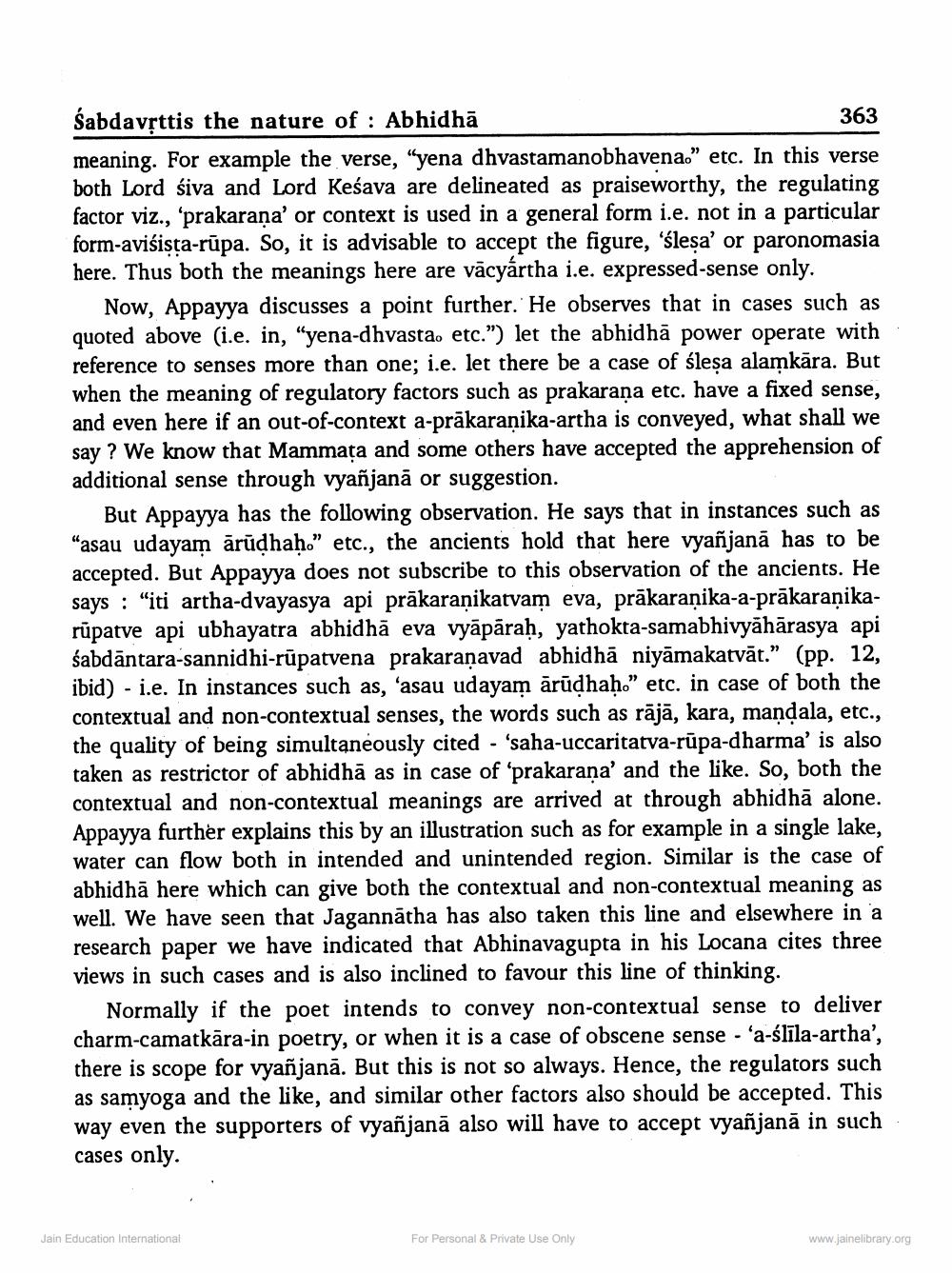________________
Śabdavșttis the nature of : Abhidhā
363 meaning. For example the verse, “yena dhvastamanobha .” etc. In this verse both Lord śiva and Lord Keśava are delineated as praiseworthy, the regulating factor viz., 'prakarana' or context is used in a general form i.e. not in a particular form-avisista-rūpa. So, it is advisable to accept the figure, 'ślesa' or paronomasia here. Thus both the meanings here are vācyártha i.e. expressed-sense only.
Now, Appayya discusses a point further. He observes that in cases such as quoted above (i.e. in, "yena-dhvasta. etc.") let the abhidhā power operate with reference to senses more than one; i.e. let there be a case of ślesa alamkāra. But when the meaning of regulatory factors such as prakarana etc. have a fixed sense, and even here if an out-of-context a-prākaranika-artha is conveyed, what shall we say? We know that Mammata and some others have accepted the apprehension of additional sense through vyañjanā or suggestion.
But Appayya has the following observation. He says that in instances such as "asau udayam ārūdhah.” etc., the ancients hold that here vyañjanā has to be accepted. But Appayya does not subscribe to this observation of the ancients. He says : "iti artha-dvayasya api prākaranikatvam eva, prākaranika-a-prākaraṇikarūpatve api ubhayatra abhidhā eva vyāpārah, yathokta-samabhivyāhārasya api śabdāntara-sannidhi-rūpatvena prakaranavad abhidhā niyāmakatvāt.” (pp. 12, ibid) - i.e. In instances such as, 'asau udayam ārūdhah.” etc. in case of both the contextual and non-contextual senses, the words such as rājā, kara, mandala, etc., the quality of being simultaneously cited - 'saha-uccaritatva-rūpa-dharma' is also taken as restrictor of abhidhā as in case of 'prakarana' and the like. So, both the contextual and non-contextual meanings are arrived at through abhidhā alone. Appayya further explains this by an illustration such as for example in a water can flow both in intended and unintended region. Similar is the case of abhidhā here which can give both the contextual and non-contextual meaning as well. We have seen that Jagannātha has also taken this line and elsewhere in a research paper we have indicated that Abhinavagupta in his Locana cites three views in such cases and is also inclined to favour this line of thinking.
Normally if the poet intends to convey non-contextual sense to deliver charm-camatkāra-in poetry, or when it is a case of obscene sense - 'a-ślīla-artha', there is scope for vyañjanā. But this is not so always. Hence, the regulators such as samyoga and the like, and similar other factors also should be accepted. This way even the supporters of vyañjanā also will have to accept vyañjana in such cases only.
Jain Education International
For Personal & Private Use Only
www.jainelibrary.org




